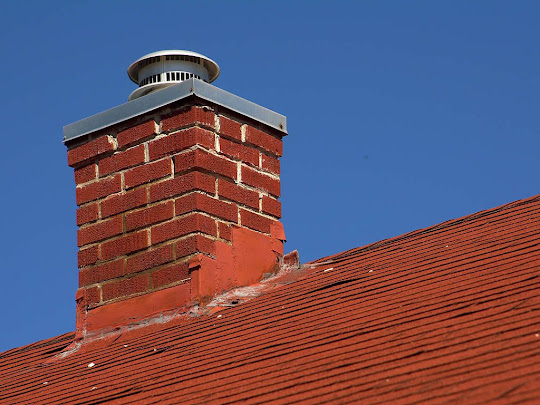Everything You Need to Know About Chimney Removal
Chimneys, once essential for heating and ventilation, have become outdated in modern homes. As homeowners increasingly opt for alternative heating solutions, the question of chimney removal arises. Understanding the intricacies of this process is crucial for those contemplating such a project. In this comprehensive guide, we delve into everything you need to know about chimney removal, demystifying the process and offering insights for informed decision-making.
What is Chimney Removal?
What are the things You Must Know About Chimney Removal?
Delving into the world of chimney removal unveils a spectrum of considerations that range from structural implications to environmental impact. This guide illuminates the essential aspects homeowners need to be aware of, ensuring a well-informed approach to chimney removal endeavors.
- Assessment and Inspection
Before commencing chimney removal, a thorough assessment and inspection are paramount. Professionals evaluate the chimney’s condition, structural integrity, and potential impact on the building. This meticulous examination guides the strategic planning of the removal process, ensuring a comprehensive understanding of the task at hand.
- Regulatory Compliance
Chimney removal often requires compliance with local building codes and regulations. Understanding these requirements is essential to avoid legal complications and ensure a smooth process. Professionals navigate the intricate landscape of regulations, providing peace of mind to homeowners while adhering to the necessary legal framework.
- Cost Considerations
The cost of chimney removal varies based on factors such as chimney height, construction material, and accessibility. Obtaining detailed quotes from contractors helps in budget planning. Assessing these costs thoroughly allows homeowners to make informed decisions, preventing unexpected financial burdens during the removal process.
- Alternative Heating Solutions
Consider alternative heating solutions before removing a chimney. Switching to more modern systems like gas or electric heaters may impact the decision to remove the chimney. This consideration aligns with the broader goal of enhancing energy efficiency and exploring sustainable heating options for the home.
- Environmental Impact
The disposal of chimney materials, particularly if they contain asbestos, requires adherence to environmental guidelines. Professionals should handle hazardous materials appropriately. Prioritizing environmentally responsible disposal methods contributes to sustainability efforts, minimizing the ecological impact of chimney removal.
- Structural Implications
Removing a chimney can have structural implications for a building. Professionals assess and address any potential impact on the structure’s stability during the removal process. Their expertise ensures a careful balance between achieving the removal goals and maintaining the overall structural integrity of the property.
- Roof Repair
Chimney removal often involves repairing the roof where the chimney once stood. Proper roofing procedures and waterproofing are essential to maintain the building’s integrity. Thorough roof repair not only addresses the immediate impact of chimney removal but also safeguards the property against potential water damage in the future.
- Interior Repairs
The removal process may affect the interior spaces connected to the chimney. Consideration should be given to repairing walls, ceilings, and flooring affected by the removal. Planning for comprehensive interior repairs ensures a seamless transition, preventing any lingering issues from the removal process.
- Timeline
Chimney removal timelines depend on various factors, including the complexity of the removal and weather conditions. Setting realistic expectations helps in planning accordingly. A well-defined timeline provides homeowners with a clear roadmap, allowing them to anticipate the duration of the project and make informed decisions.
- Debris Disposal
Proper disposal of chimney debris is crucial. Contractors must follow waste disposal regulations and choose environmentally responsible methods. Prioritizing responsible debris disposal not only aligns with environmental standards but also contributes to the overall cleanliness and safety of the removal site.
- Professional Expertise
Hiring professionals with expertise in chimney removal is essential. Their knowledge ensures a safe and efficient removal process, minimizing risks and potential damages. Trusting in professional expertise provides homeowners with confidence in the execution of the project, knowing that it is in capable hands.
- Insurance Coverage
Check insurance coverage before chimney removal. Some policies may cover the costs associated with removal, depending on the reasons behind the decision. Understanding insurance coverage ensures financial protection, offering homeowners reassurance in the face of unexpected challenges during the removal process.
- Impact on Property Value
Consider the potential impact on property value after chimney removal. In some cases, removing an unused or unsafe chimney can enhance a property’s appeal. A thoughtful approach to understanding the impact on property value helps homeowners make decisions that align with their long-term goals for the property.
- Historical Considerations
If the property is of historical significance, consult with preservation experts before removing a chimney. Some structures may require careful preservation efforts. Incorporating historical considerations into the removal process honors the property’s heritage, ensuring that removal aligns with preservation goals where applicable.
- Future Renovations
Anticipate future renovations when planning chimney removal. Addressing potential modifications or additions beforehand can save time and resources in the long run. Considering future renovations as part of the removal plan ensures that the property is well-positioned for evolving needs, promoting long-term efficiency and functionality.
.jpg)
.jpg)
.jpg)

Comments
Post a Comment